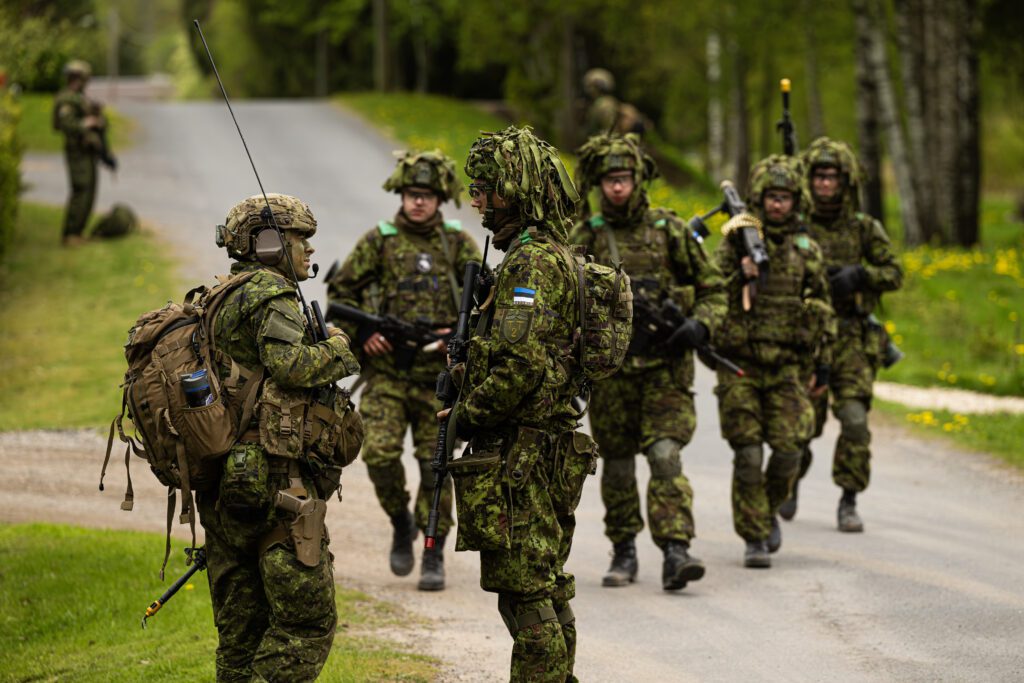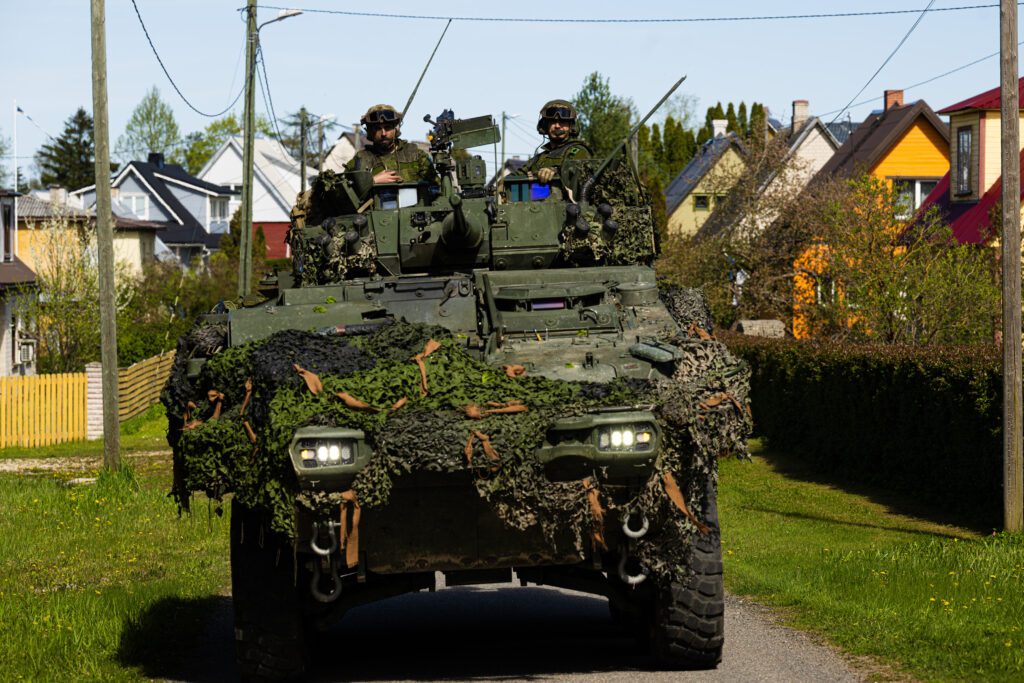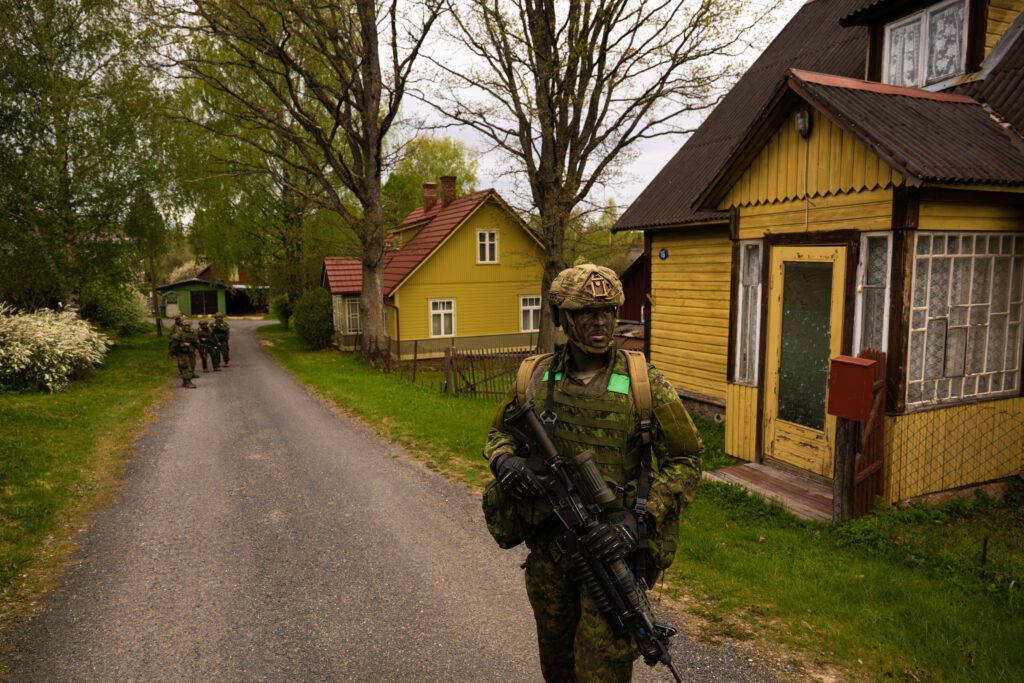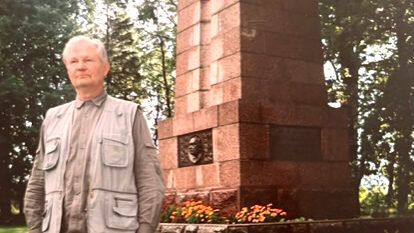That’s thanks to the work of people like photojournalist Gavin John, who brought an emotive article and photos to the front page of The Globe & Mail on Tuesday June 18th. John had spent four months planning, pitching, creating, and finalizing his report on NATO’s Spring Storm (Kevadtorm) 2024 exercise, which took place from January to May. For two weeks, he moved with, talked to, and photographed soldiers in Estonia. The result is a piece that reminds readers of Canada’s dedication to NATO allies in the Baltics and the broader implications of defending the Baltics.
[Gavin John] insists that the only things that will deter Russia are strength and unity.
With a background in strategic studies and journalism, John has closely followed the war in Ukraine since it began in 2014. He observed similar trends in the escalation of Russian aggression towards Estonia, Latvia, and Lithuania. Simultaneously recognizing North America's detachment from this threat and hearing about NATO’s Steadfast Defender exercise (of which Spring Storm 2024 in Estonia was a part) he pitched the idea to The Globe & Mail.
John makes it clear, “No one wants war.” As a war correspondent, he hates war. But recalling the words of chief of the Defence Staff, General Eyre, he insists that the only things that will deter Russia are strength and unity. John documented these very qualities when he reported on the CAF presence in Estonia, a continuation of cooperation between Estonia and NATO that started even before Estonia officially joined in 2004.

United across Eastern Europe this year were 90,000 NATO troops, 1,000 of whom are Canadians. John was embedded within 2nd Battalion, Royal Canadian Regiment, a mechanized infantry unit from New Brunswick. “These are men and women from Canada who have volunteered to serve in Estonia and die for Estonia,” he says. And this choice is informed.
“I want to make sure I'm doing my duty.”
(Private Nicholas Rice)
John got to know nine soldiers particularly well as they travelled in a Light Armoured Vehicle (LAV). Among them were Major Jason O’Rourke, Captain Alex Zaremba, Master Corporal Sam Murphy, and Private Nicholas Rice. Troops who aren’t Estonian, but who care about the country and its people, some of whom greeted them warmly with baked goods and vegetables.
19-year-old Private Nicholas Rice referenced his grandfather’s service in World War Two: “I want to make sure I'm doing my duty.” Captain Zaremba knows “There are people who were born here under the Soviet Union. They know what it’s like and don’t want that again.” These conversations, about what it means to them to be in Estonia and why Canadians should care, were humbling.

The soldiers grew genuinely attached to the country they would be defending. They wanted to know more about Estonia and to connect with the local culture. They admired the resilience of Estonians throughout centuries of occupations.
Gavin John and the Canadian troops were in Pärnu and Viljandi counties, in an “operational box” south of the Halliste river and along National Road 6. Spanish, Danish, Estonian, and Italian troops were north of the Canadians, while British, French, and Estonian troops portrayed an invading force to the east. The swaying realities of war could be felt within one day, with a rousing victory and a chilling defeat in close succession.
The French combatants popped up on both sides, and despite an attempt to call in three LAVs as reinforcements, within 10 minutes, the Canadians were all “killed.”
John describes how the unit he was with “had just come off quite a high” after planning a forest ambush that obliterated two enemy tanks. Soon after, they were alerted to a counter-attack in Tihemetsa. While investigating an abandoned factory, an entire French company lured two 30-soldier platoons onto a narrow path between a wetland and a lake. The French combatants popped up on both sides, and despite an attempt to call in three LAVs as reinforcements, within 10 minutes, the Canadians were all “killed.”
On one hand, it was a brutal vision of what it’s like to fight an enemy with sophisticated strategies. On the other hand, NATO allies have been sharing their knowledge, improving the chances of successfully defending the Baltics, with boots on the ground in addition to artillery and air support.
The strategy is clear. Troops have to act quickly, to prevent invading armies from digging in with impenetrable trench lines, as seen in eastern Ukraine. Moreover, NATO has clearly defined that in the event of an invasion, Russia must be held back for six days. John says, “It’s about giving the Germans, Polish, and French enough time to make their way up.”
In the end, John had 21,000 photos to choose from, edit, and caption. Photos that shatter the peaceful, ethereal image many Estonians have of their homeland. Photos where soldiers and vehicles roll past the homes of family, friends, and colleagues. With these images, John explains, “My goal is to make sure that Abja-Paluoja doesn’t become a Bakhmut, that Tihemetsa doesn’t become a Mariupol. I have to show the people that live here. I have to show what Estonia looks like… I grew up in a small town in Alberta. I can't imagine what it would look like having a tank coming down Main Street in Strathmore. But Estonians have to, and I think that we have to realize that.”

John calls his report on Spring Storm the highlight of his career so far. He has worked in Iraq twice. He has photographed North Korea, disaster relief in the Philippines, and the Bold Eagle program in Canada, to name a few assignments. However, being in Estonia was especially significant for him. Everything he has learned about war and building rapport with people led to this piece.
Looking back on Spring Storm, Gavin John insists, “Exercises like this are important for us, to see places that we relate to security, peace, and home, and how that all can be taken away so quickly.”





